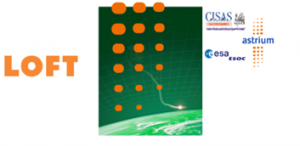- Orbital simulation and satellite constellation optimal design
The group performs orbital propagation of single satellites and satellites constellation, to perform trajectory and pointing analysis, with particular attention to the implications on coverage and ground resolution, as well as on attitude control and propulsion system requirements.
- Tether systems
Dynamics of tethers for deorbiting; passive (nonconductive) and active (electrodynamic) systems are modeled and used for simulations. Contributions on:
-
- Dynamic models of tethers
- Validation of simulations against real mission (SEDS2; TSS-1R; others…)
- Slack modeling issues
- Environmental aspects:
- Lunar and solar gravity
- SRP at each node
- Environmental module for temperature and density
Further studies on Electrodynamic tethers are ongoing (grants from EC for ETPACK and ETPACK-F) for dynamical instabilities and control mitigation (simulations), development of a longitudinal damper; deployment mechanism design and simulations (see ETPACK and ETPACK-F). Analysis of deorbiting simulations and performances.
- EDL probes
The research activity is mainly focused on entry, descent and landing systems for deep space missions to Mars, Saturn, Titan, Uranus, Neptune and other solar system bodies.
The research activity is focused on the development and validation of bayesian estimation methods for reconstructing the spacecraft trajectory and identifying its main parameters using both onboard and remote sensing data. This is to pursue the following objectives:
-
- Post-flight analysis and assessment of EDL engineering performances
- Reconstruction of both trajectory and atmospheric profiles to support scientific activities
- Design and optimization of new missions and on-board sensors
Starting from the experience on past missions such as Huygens and ExoMars the research area is expanded to include the design of guidance algorithms, vision-based terrain relative navigation, hazard detection and avoidance, and all the activities needed to select and certify the landing sites.
The algorithms suitably adapted to the different flight configurations were used for the reconstruction of the descent profile and attitude of the Schiaparelli spacecraft within the AMELIA experiment (Atmospheric Mars Entry and Landing Investigations and Analysis) during the entry into the atmosphere of Mars in October 2016 and are being studied for the AMELIA for Exomars 2028.
Some potential research activities in aerospace flight dynamics could include:
- Development of flight control algorithms: Flight control algorithms are used to stabilize aircraft and spacecraft during flight. Researchers could work on developing new algorithms that are more robust and efficient, allowing for more precise control of vehicles in challenging flight conditions.
- Analysis of aerodynamic performance: Researchers could study the aerodynamic performance of various aerospace vehicles to better understand how they behave during flight. This could involve wind tunnel testing, computational fluid dynamics simulations, or other experimental methods.
- Investigation of vehicle stability: Stability is a critical factor in aerospace flight dynamics, as unstable vehicles can be difficult or impossible to control. Researchers could investigate the stability of different aerospace vehicles and explore ways to improve their stability characteristics.
- Design of novel flight systems: Researchers could work on designing new types of aerospace vehicles, such as supersonic or hypersonic aircraft or novel spacecraft propulsion systems. This could involve both theoretical modeling and experimental testing.
- Development of autonomous flight systems: Autonomous flight systems, such as drones and self-piloting aircraft, are becoming increasingly important in the aerospace industry. Researchers could work on developing new autonomous flight systems that are more robust and reliable, with improved performance characteristics.
Information on facilities and laboratories can be found on the dedicated page.

